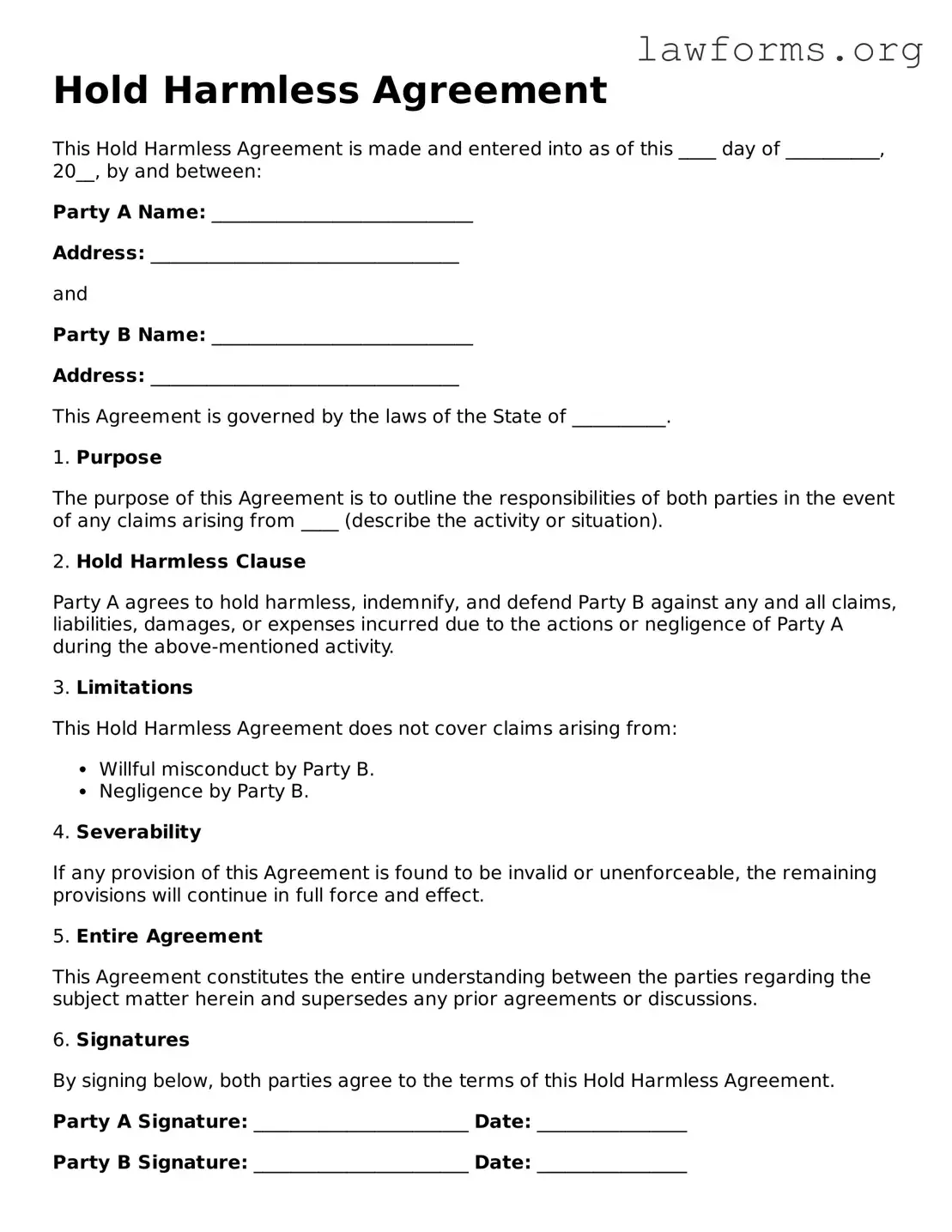Hold Harmless Agreement
This Hold Harmless Agreement is made and entered into as of this ____ day of __________, 20__, by and between:
Party A Name: ____________________________
Address: _________________________________
and
Party B Name: ____________________________
Address: _________________________________
This Agreement is governed by the laws of the State of __________.
1. Purpose
The purpose of this Agreement is to outline the responsibilities of both parties in the event of any claims arising from ____ (describe the activity or situation).
2. Hold Harmless Clause
Party A agrees to hold harmless, indemnify, and defend Party B against any and all claims, liabilities, damages, or expenses incurred due to the actions or negligence of Party A during the above-mentioned activity.
3. Limitations
This Hold Harmless Agreement does not cover claims arising from:
- Willful misconduct by Party B.
- Negligence by Party B.
4. Severability
If any provision of this Agreement is found to be invalid or unenforceable, the remaining provisions will continue in full force and effect.
5. Entire Agreement
This Agreement constitutes the entire understanding between the parties regarding the subject matter herein and supersedes any prior agreements or discussions.
6. Signatures
By signing below, both parties agree to the terms of this Hold Harmless Agreement.
Party A Signature: _______________________ Date: ________________
Party B Signature: _______________________ Date: ________________
